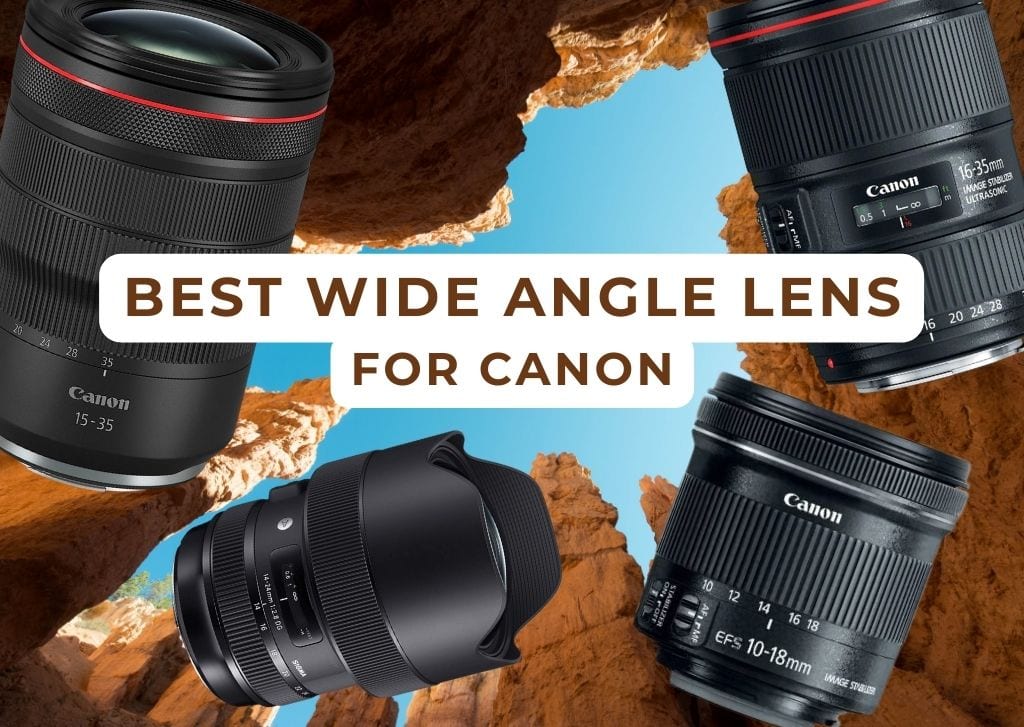A wide-angle lens is often a favorite purchase of any photographer (at least it was mine), and for Canon users, there’s a handful of amazing options to choose from. Whether you’re looking to shoot landscapes, environmental portraits, astro, or anything in between, this list has the best wide-angle options for Canon shooters needing RF, EF, or EF-S mounts, all backed by hands-on experience and research.
The Best Wide Angle Lenses For Canon (RF, EF, EF-S)
| Image | Product | Features | Price |
|---|---|---|---|
Best RF Option 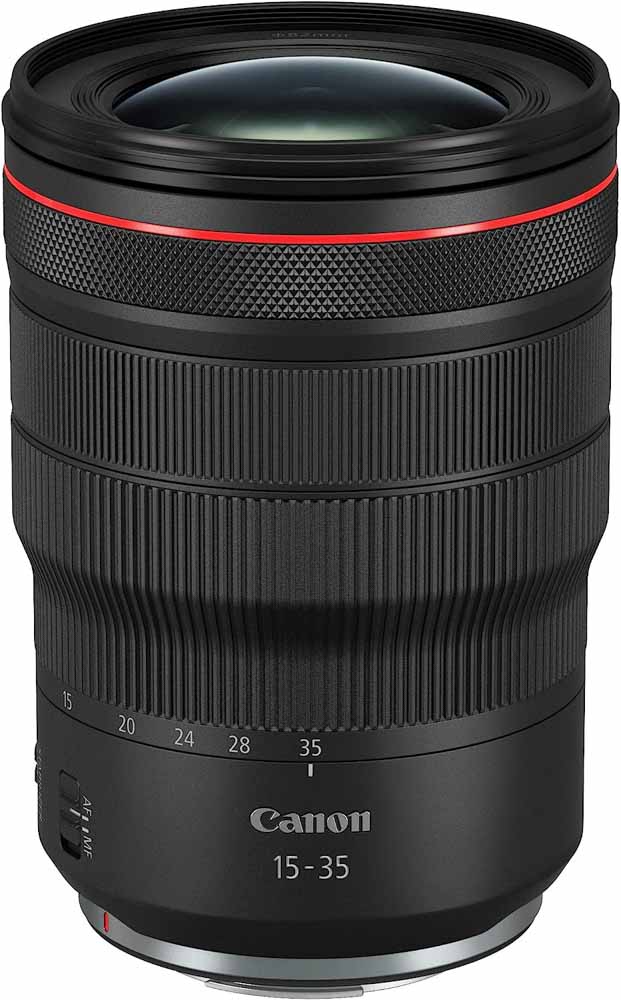 |
| Find On Amazon | |
 |
| Find On Amazon | |
Best EF Option 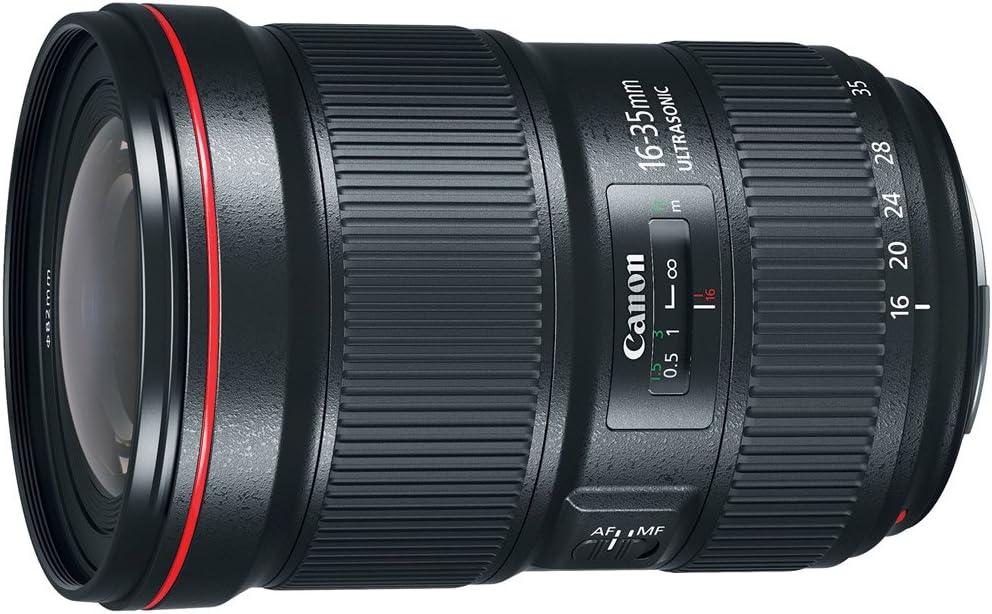 |
| Find On Amazon | |
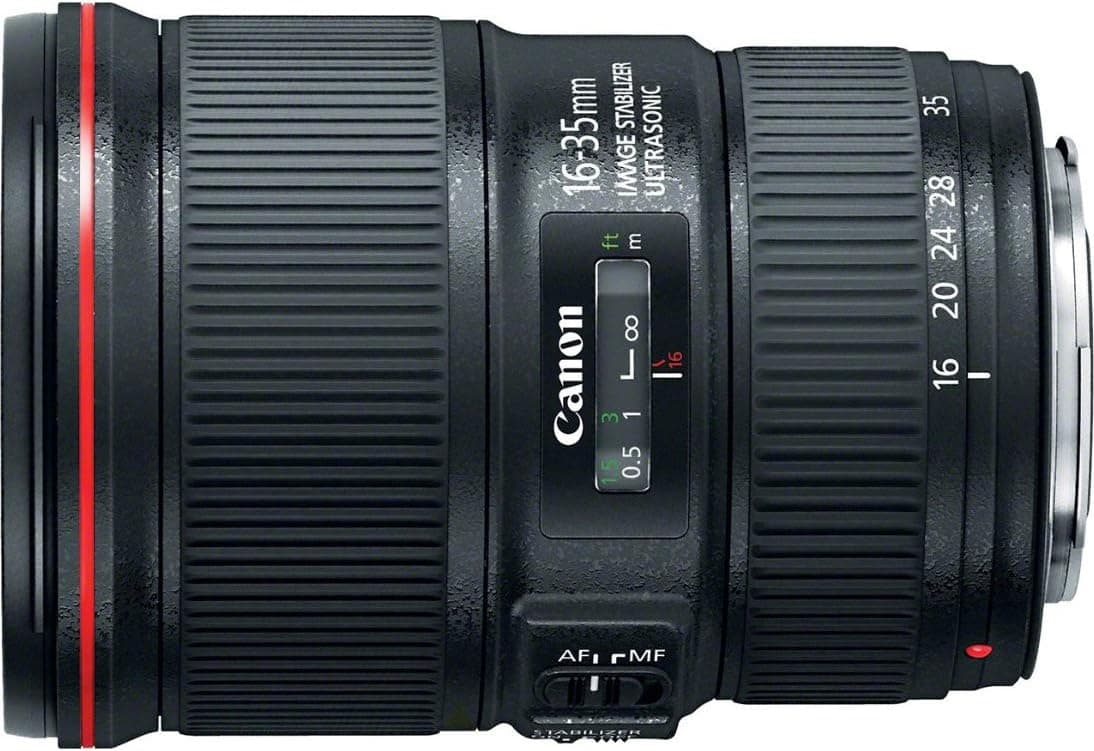 |
| Find On Amazon | |
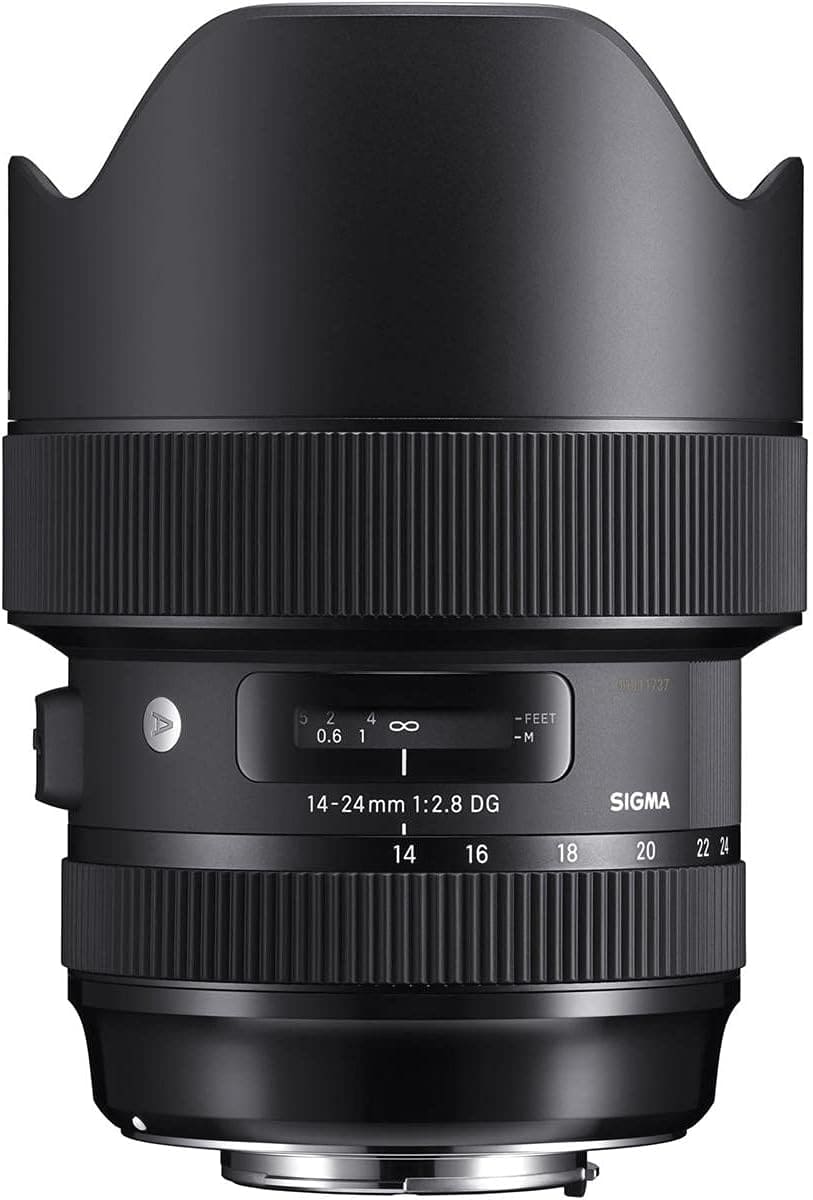 |
| Find On Amazon | |
 |
| Find On Amazon | |
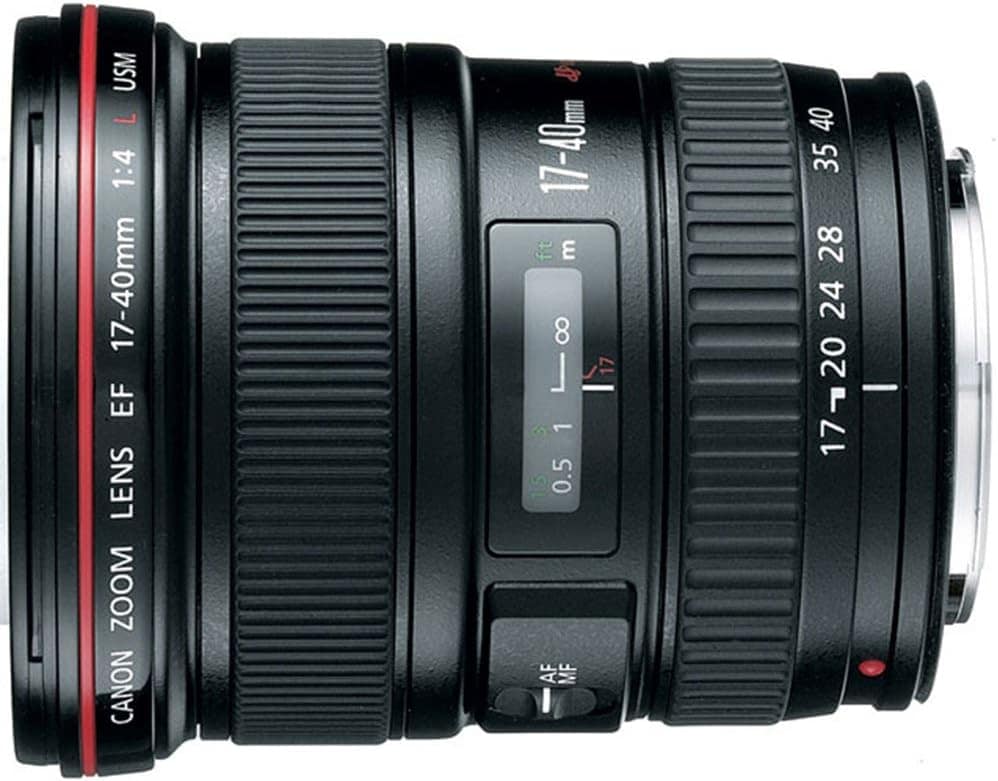 |
| Find On Amazon | |
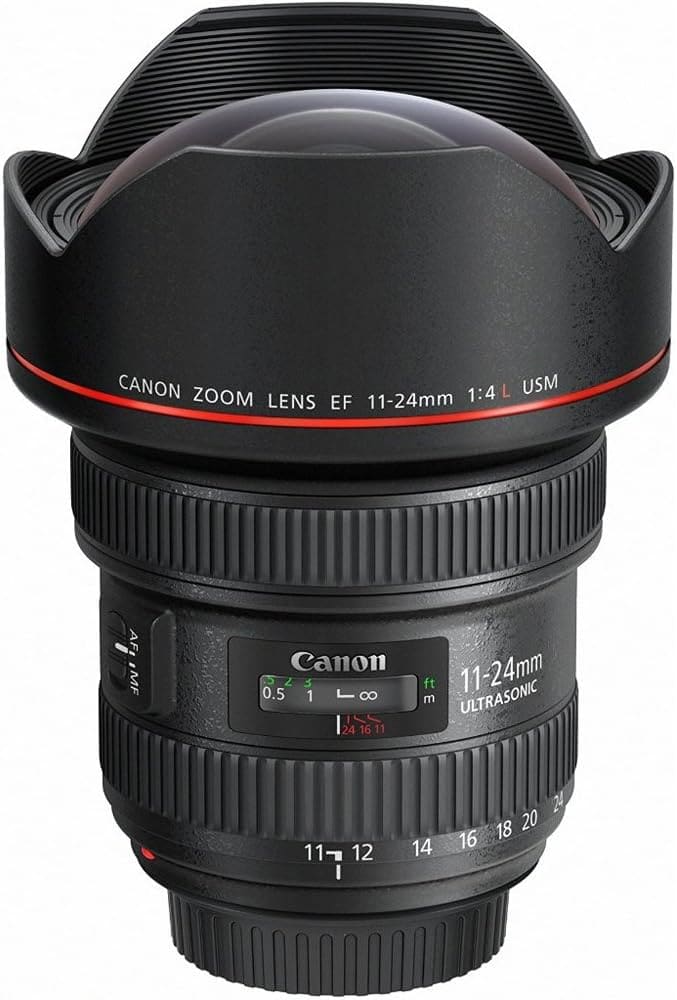 |
| Find On Amazon | |
Best EF-S Option 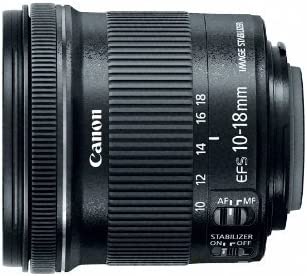 |
| Find On Amazon | |
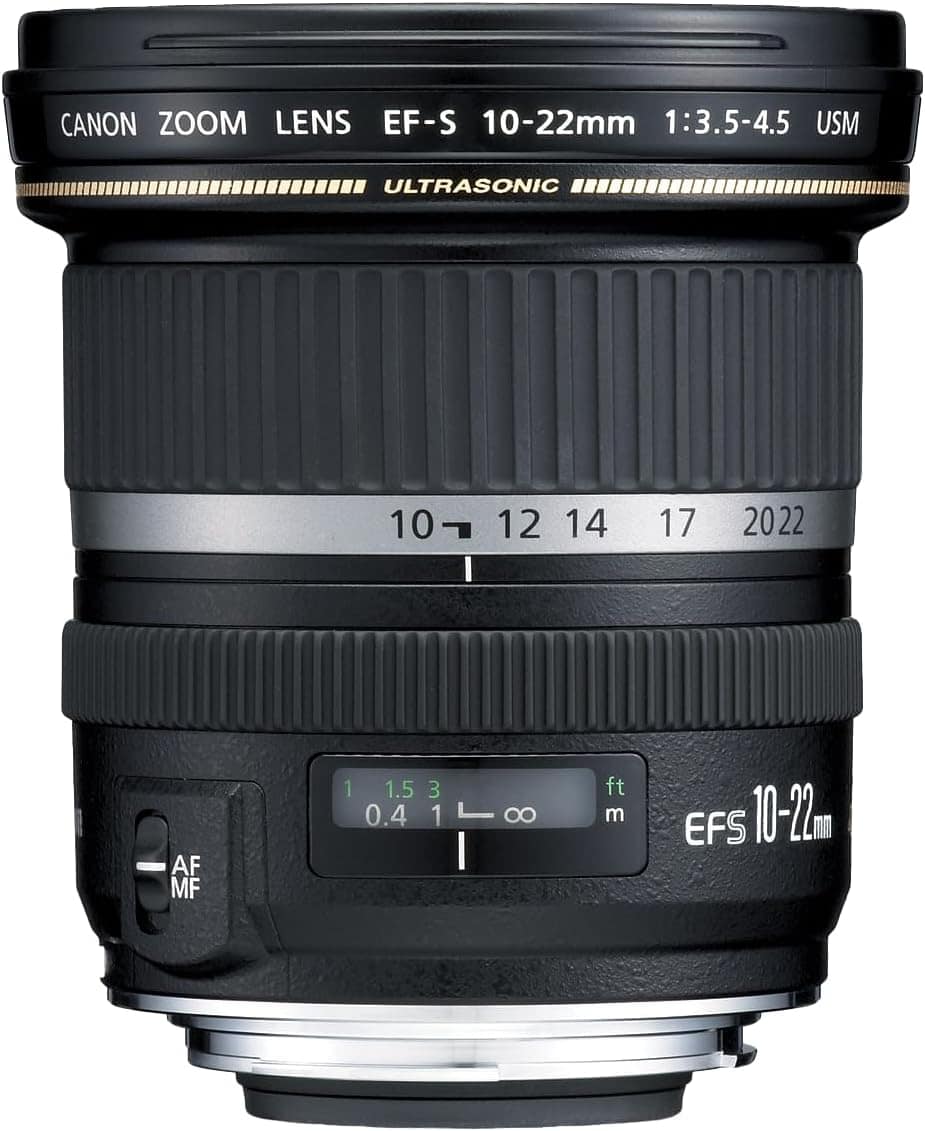 |
| Find On Amazon |
The Best RF Wide Angle Lenses For Canon
RF is Canon’s mirrorless camera system. Currently, only Canon-brand lenses are available in native RF mount as Canon has not authorized third-party companies to develop optics yet.
1. Canon RF 15-35mm f/2.8L IS USM
Advancements in mirrorless technology allow camera brands to create previously unavailable lenses. The Canon RF 15-35mm f/2.8 IS USM is one such lens, improving upon the beloved Canon EF 16-35mm f/2.8 IS USM lens. The extra one millimeter in perspective does make a difference, helping capture more of that beautiful location in front of you.
Being an L (for Luxury) lens, this optic is top-of-the-line. Featuring complete weather sealing, temperature regulating construction, and a fluorine coating on both the front and rear glass – there is little to fault in this lens! You won’t suffer from chromatic aberration and will find yourself using your editing tools less and less.
However, the price tags on the RF lens versions are definitely on the high side, being much pricier options than the DSLR lenses. While there was a lot of attention to detail in this lens, it suffers from darker edges at its widest focal point, likely due to the zooming mechanism. Some photographers like this as a stylistic choice, so it may not be a deal breaker.
Reasons to buy
- Constant f/2.8 maximum aperture that enables low light shooting and shallow depth of field
- Optical image stabilization that offers up to five stops of shake correction
- Fast and smooth Nano USM autofocus system with full-time manual focus override
- Weather-sealed and durable construction with a fluorine coating on front and rear elements
Reasons to avoid
- Expensive compared to other options
- Some barrel distortion and vignetting at the widest end
2. Canon RF 14-35mm f/4L IS USM
An even wider field of view than the Canon RF 15-35mm f/2.8L IS USM mentioned above, the Canon RF 14-35mm f/4L IS USM is an excellent choice for real estate photographers.
Encompassing all of the L-series benefits, you can expect outstanding construction and excellent visual results. The autofocus system is quiet, notable for those wanting to dabble in video alongside still photographs.
Although this lens is not as fast as other wide-angle lenses, being an F/4 rather than an F/2.8, the image stabilization helps mitigate this a bit. With up to 5.5 stops of shake correction, this can help slow the shutter down to maximize dimmer indoor lighting situations.
For the pixel peepers, this lens suffers slightly less sharpness in its corners than in the center of the frame. But assuredly, this is such a minimally noticed issue that most photographers would not be affected.
Reasons to buy
- Constant f/4 maximum aperture that is sufficient for most lighting conditions
- Optical image stabilization that offers up to 5.5 stops of shake correction
- Fast and quiet Nano USM autofocus system with full-time manual focus override
- Weather-sealed and solid build quality with a fluorine coating on front and rear elements
Reasons to avoid
- Not as fast as the f/2.8 version
- Slightly less sharp at the corners than the f/2.8 version
The Best EF Wide Angle Lenses For Canon
Despite mirrorless cameras dominating the industry, there is far more lens selection for Canon’s DSLRs than for their R mirrorless line. However, you can buy an EF to RF adapter from Canon and use these lenses on your R camera.
3. Canon EF 16-35mm f/2.8L III USM
One of Canon’s favorite lenses, the Canon EF 16-35mm f/2.8L III USM, is a true gem that holds up well today. Considering this is version three of the focal length is a testament to how often the 16-35mm is thrown into photographers kits! A versatile focal length that can tackle astrophotography, architecture, landscapes, and more.

Despite being an older lens, the construction is truly revolutionary. This lens is a fine choice from edge-to-edge sharpness (no worry about losing sharpness in the corners) to a constant F/2.8 aperture that creates a creamy bokeh. The fast autofocus system still holds up, although it is not silent like in the mirrorless RF lenses.
The weather sealing and durable construction help landscape photographers tremendously, as this lens will be a great hiking companion. This does come at a compromise in size and weight, though, as this lens is relatively heavy compared to similar focal lengths.
All of the above being said, these perks come at a cost. Despite being released in 2016, this lens has retained its value over time, keeping it pricey. This lens also lacks image stabilization (which isn’t too much of an issue for an F/2.8), which is worthy of note considering the price tag.
Reasons to buy
- Constant f/2.8 maximum aperture for low light shooting and shallow depth of field
- Superb center-to-edge sharpness, even at wide apertures
- Fast and accurate ring-type USM autofocus system with full-time manual override
- Weather-sealed and durable construction with fluorine coating on front and rear elements
Reasons to avoid
- Expensive and heavy compared to other options
- Some barrel distortion and vignetting at the widest end
4. Canon EF 16-35mm f/4L IS USM
If the F/2.8 version isn’t in your budget, the Canon EF 16-35mm f/4L IS USM might be! Despite having a narrower aperture, an F/4 can handle many different lighting conditions. With this lens having optical stabilization (as opposed to the F/2.8 not having this), the shake correction can help with the narrower aperture.
This 16-35mm still boasts the same perks as the wider aperture version above, including minimizing wide-angle distortion. Being such a standard lens in Canon’s lineup, Adobe’s editing software already has profiles for this lens to help correct any distortion that does occur with just the click of a button!
Admittedly, the corners are less sharp than the other version, but the price difference can compensate for this con.
Reasons to buy
- Constant f/4 maximum aperture that is sufficient for most lighting conditions
- Excellent image quality with minimal distortion, chromatic aberration, and flare
- Optical image stabilization that offers up to four stops of shake correction
- Weather-sealed and solid build quality with a fluorine coating on front and rear elements
Reasons to avoid
- Not as fast as the f/2.8 version
- Slightly less sharp at the corners than the f/2.8 version
5. Sigma 14-24mm f/2.8 DG HSM Art
Where there was once a reluctance to purchase third-party gear, it is now a good alternative. SIGMA is one such third-party company with lenses that are very close in quality and value to the name-brand ones. In the case of the Sigma 14-24mm f/2.8 DG HSM Art, the results are sharp, beautifully contrasted, and visually pleasing.

At a lower price than the Canon-brand equivalent, this lens checks most of the boxes: a wide aperture of F/2.8 that handles dimmer lighting conditions without issue, a quiet and smooth autofocus system that communicates with the camera body like a native lens would, and a durable construction that can withstand some dings. Overall, a fantastic lens that gets the job done in a much budget-friendlier way.
However, this lens is more prominent, bulkier, and heavier than the Canon equivalent, so it isn’t as easy to carry around. This might be an issue for some photographers, not for others, but definitely worthy of consideration if you tend to shoot for hours at a time.
This 14-24mm also lacks image stabilization, fluorine coating, and a filter thread on the lens – meaning that filters would have to be attached with a holder on the outside (inconvenient for landscape photographers who use ND filters).
Reasons to buy
- Constant f/2.8 maximum aperture that enables low light shooting and shallow depth of field
- Great sharpness and contrast across the frame and focal range
- Smooth and quiet HSM autofocus system with full-time manual focus override
- A great affordable alternative to Canon-branded lenses
Reasons to avoid
- Heavier and bulkier than the Canon equivalents
- No filter thread
6. Tamron SP 15-30mm f/2.8 DI VC USD G2 for Canon
Tamron is the other famous third-party lens company creating alternative versions for brand-name camera bodies! The Tamron SP 15-30mm f/2.8 DI VC USD G2 is an ultra-wide angle lens that would make the budget-conscious very happy.
Unlike the SIGMA lens above, this optic does feature image stabilization, a workhorse feature to pair with an F/2.8 aperture for low-light shooting. The depth of field produced with an F/2.8 is particularly stunning in this lens, creating a very nice natural bokeh. This lens is also fluorine coated to prevent flares and chromatic aberration, alongside a reasonably well-weather-sealed build.
The above being said this 15-30mm does suffer from the same con as the SIGMA – it is much heavier and bulkier than the Canon equivalent. This compromise does lend to a lower price but can be difficult if the lens is used for long periods. Even half a pound can make an impact!
Reasons to buy
- Constant f/2.8 maximum aperture that allows for low light shooting and shallow depth of field
- Excellent image quality with minimal distortion, chromatic aberration, or flare
- Optical image stabilization that provides up to 4.5 stops of shake reduction
- Fast and accurate USD autofocus system with full-time manual focus override
Reasons to avoid
- Heavier and larger than the Canon equivalents
- Some vignetting and loss of sharpness at the corners
7. Canon EF 17-40mm f/4L USM
One of the most aptly priced L-series lenses, the Canon EF 17-40mm f/4L USM is a versatile focal length that gets the job done. Aimed heavily at the traveling photographer, this lens is compact and lightweight, making travel much easier than some of the other lenses on the list.

This lens is unique compared to the others on the list because the 40mm part of the focal length works very well for portraits. This lens can also double as a lens to capture all walks of life-a capable walk-around lens.
The construction itself is worthy of note, featuring thick rubber gaskets around all of the sensitive components, ensuring water, dirt, and dust don’t touch parts that are easily damaged.
Unfortunately, this lens is not sharp at the edges (compared to other optics in the L line). The lower cost also means corners were cut with image stabilization and fluorine coating, something to be mindful of when shooting indoors or with stark contrast.
Reasons to buy
- Affordable price for an L-series lens with decent image quality and build quality
- Compact and lightweight design that is easy to carry around
- Weather-sealed construction with a metal mount and a rubber gasket
- Ring-type USM autofocus system with full-time manual focus override
Reasons to avoid
- Not very sharp at the edges, especially at wider apertures or focal lengths
- No image stabilization or fluorine coating on the elements
8. Canon EF 11-24mm f/4L USM
Photographers looking for a very wide lens will likely enjoy the Canon EF 11-24mm f/4L USM, which holds the title of being the widest rectilinear zoom lens available for full-frame cameras. With its width, this lens does lose the filter thread – but an external filter adapter could be added.
The F/4 is narrower than the more common F/2.8, but it works brilliantly for most lighting conditions. The lack of optic stabilization poses a negative in this regard, but many using a lens like this would likely designate it to a tripod.
This lens really shines in its optic performance, offering minimal distortion despite the ultra-wide field of view and no chromatic aberrations or flaring issues. The result is beautifully crisp, clear, and contrasted images! This is because the front and rear glass elements have fluoride coating, ensuring that optic issues do not occur.
The lens is rather large and bulky, expensive, and lacks a filter thread, but the images produced still make it absolutely worth considering.
Reasons to buy
- The widest rectilinear zoom lens available for full-frame cameras
- Outstanding image quality with minimal distortion, chromatic aberration, or flare
- Fast and accurate ring-type USM autofocus system with full-time manual focus override
- Weather-sealed and robust construction with a fluorine coating on front and rear elements
Reasons to avoid
- Very expensive and heavy compared to other options
- Fixed maximum aperture of f/4 that limits low light performance and depth of field control
The Best EF-S Wide Angle Lenses For Canon
EF-S lenses were designed for APS-C (or crop sensor) cameras. These lenses maintain their accurate focal length versus placing a full frame lens on a crop sensor camera in which the field of view becomes narrower.
9. Canon EF-S 10-18mm f/4.5-5.6 IS STM
Lenses designed for crop sensors get frequently overlooked, but this is the best way to ensure your crop sensor camera maintains the focal length you want. Although this may be less noticeable in other lenses, you will see the difference with a wide-angle lens. That is the case with the ultra-wide angle Canon EF-S 10-18mm f/4.5-5.6 IS STM, featuring an impressive 10mm at its widest!
Small, compact, and discreet – this lens makes an excellent companion for the traveling photographer. The sharpness and clarity of the images produced are especially great, considering the low cost of the lens (and the fact that this is not an L lens, unlike the others from Canon on the list).
With image stabilization included, this assists the variable aperture of F/4.5-5.6. Although this is not ideal (the lack of a consistent aperture means your exposure changes with the zoom), this lens can still be a great asset to landscape and architectural photographers. The quiet autofocus also makes this lens a suitable video optic.
With the great price, the Canon EF-S 10-18mm f/4.5-5.6 IS STM is an excellent lens to get one’s feet wet in the world of wide-angle optics. Although you certainly can’t expect lens corrections like fluoride coating at this price point (so chromatic aberration is something to contend with), this lens still holds its own as a nice wide angle.
Reasons to buy
- Very low price for a wide-angle lens with decent image quality and performance
- Compact and light design that is easy to carry around
- Optical image stabilization that offers up to four stops of shake correction
- Smooth and quiet STM autofocus system that works for hobbyist video recording
Reasons to avoid
- Variable maximum aperture that reduces low light performance and depth of field control
- Some distortion, chromatic aberration, and flare at the widest end
10. Canon EF-S 10-22mm f/3.5-4.5 USM
Last but not least is another ultra-wide angle (arguably more versatile), the Canon EF-S 10-22mm f/3.5-4.5 USM. The 22mm at its maximum zoom makes this lens much more adaptable to a wide array of subjects, going from an ultra-wide angle to a standard focal length.
The faster aperture than the 10-18mm above makes handling low light more manageable, but the variable nature of the aperture can still make it problematic for beginners. Another improvement over the 10-18mm above is the minimal distortion, chromatic aberration, or flare, making this lens easier to work with in that regard.
The Canon EF-S 10-22mm f/3.5-4.5 USM still lacks image stabilization, but this budget-friendly lens’s autofocus system is quite powerful—another great option to try for wide-angle photography.
Reasons to buy
- Wider focal range that covers more shooting scenarios from ultra-wide to standard
- Faster maximum aperture that improves low light performance and depth of field control
- Excellent image quality with minimal distortion, chromatic aberration, or flare
- Ring-type USM autofocus system with full-time manual focus override
Reasons to avoid
- No image stabilization or fluorine coating on the elements
- Some vignetting and loss of sharpness at the corners
Understanding Lens Mount Types For Canon
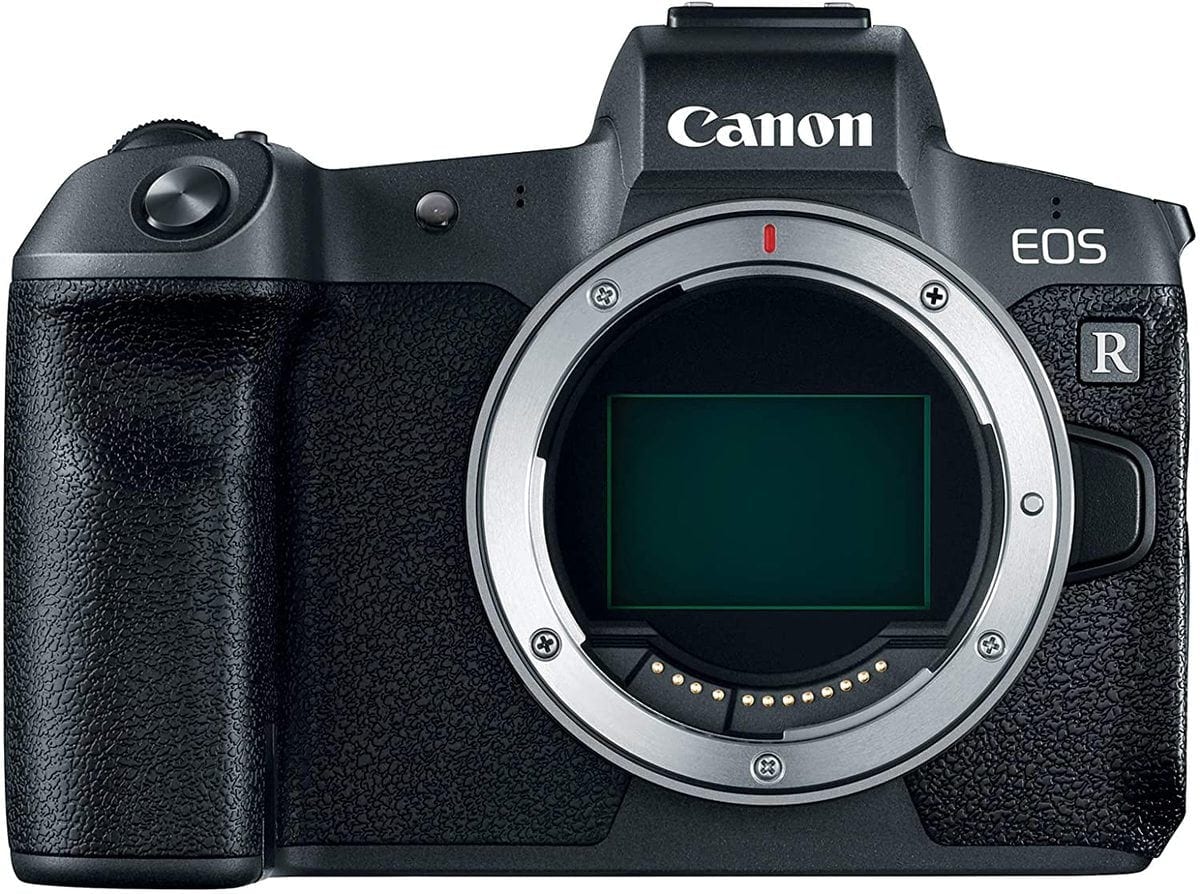
The world would be easier if there were only one mount per brand – unfortunately, that isn’t the case. The different camera lines produced by Canon have their own mounts, totaling the brand to three primary ones: RF, EF, and EF-S. Understanding what mount your camera has is the first step to picking the right wide-angle lens for you.
For those with mirrorless Canon cameras, your mount would be RF. Any camera in Canon’s R line is RF mount, such as the R5. EF and EF-S lenses do not work natively on RF. They would require an adapter to convert them.
EF is Canon’s full-frame DSLR lens collection—most of Canon’s cameras sport EF mounts. EF is not backward compatible with RF or EF-S. Examples of Canon’s EF camera bodies include the full-frame Rebel camera options up to the 5D (like the famous Canon EOS 5D Mark IV) and the IDx cameras.
EF-S is Canon’s crop sensor or APS-C camera mount. EF-S is unique in that the cameras with this mount can also accept EF lenses, but the EF lenses would have their focal length modified (narrowed from its original value) due to the camera having a cropped sensor. Native EF-S lenses do not change their focal length because they were specially made for the crop sensor.
An example of EF-S cameras is the new Canon Rebel cameras that are crop sensors and the Canon EOS 1200D.
What Focal Range Is Best For Wide Angle Photo & Video?
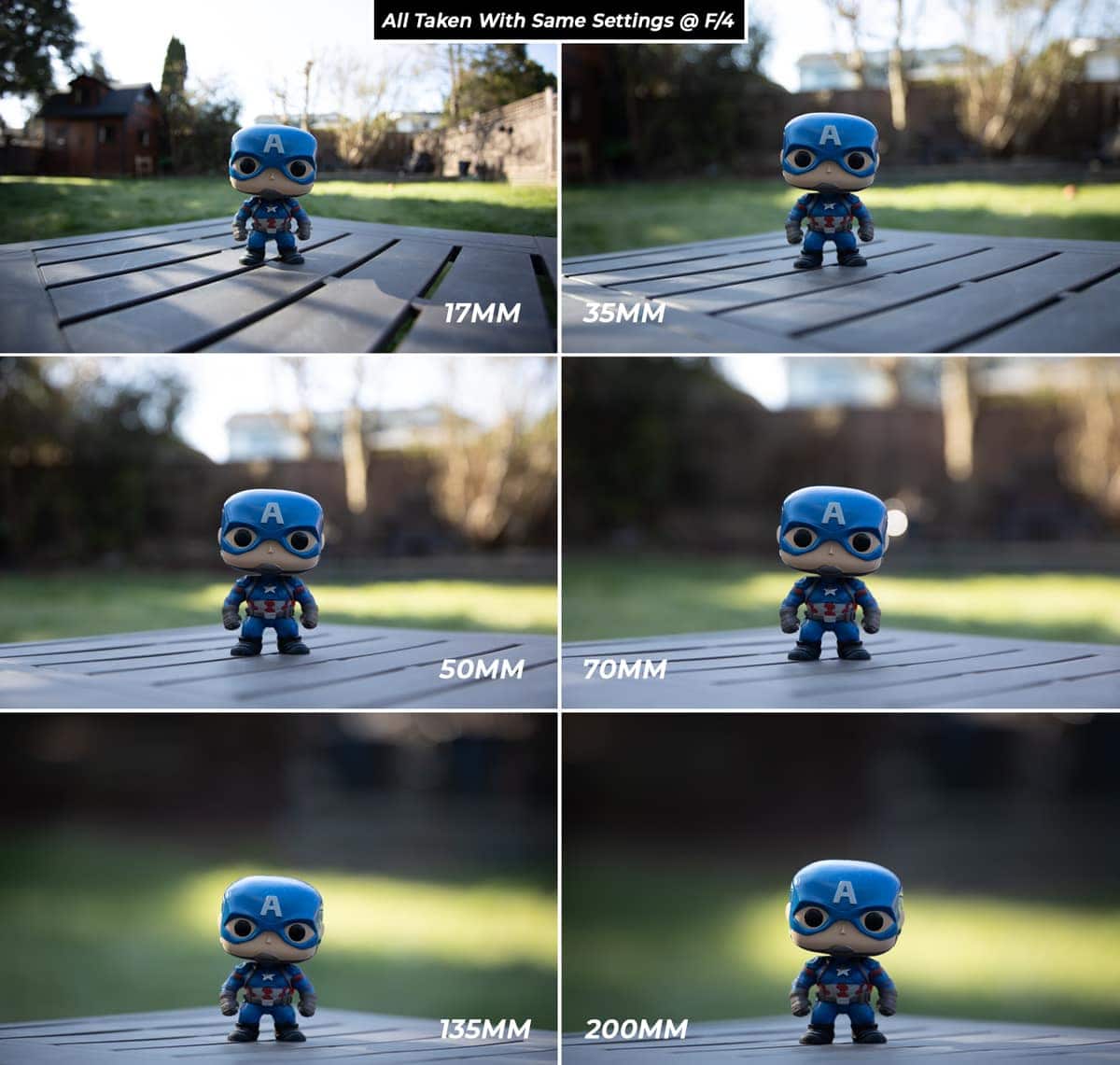
As for the “best” focal range, generally speaking, there isn’t one length that is superior to all. It depends on what you photograph, the conditions in front of you, and your style as a photographer.
Wide-angle lenses on the ultra-wide focal length scale will cause a fishbowl effect known as wide-angle distortion. This means subjects closest to the lens appear larger than those behind them (furthest from the lens). This causes relatively warped proportions on living subjects, which some photographers take advantage of, and others do not like.
Photographers who want one lens to capture multiple subjects with fancy, more versatile focal lengths should look at lenses such as the 16-35mm or the 17-40mm. These lenses have less distortion. As such, image-makers more focused on environmental portraits would be heavily inclined towards wide-angle lenses that lean closer to standard focal lengths to avoid wide-angle distortion.
Real estate and astrophotographers likely fancy ultra-wide angle lenses for the wide angle distortion works in their favor making rooms look bigger or capturing a wider night sky. These photographers take full advantage of the perspective.
Landscape photographers tend to sit in between, using whatever focal length helps them achieve the look they are after, whether long sweeping panoramas or narrower fields of view.
Choosing The Right Aperture For Wide Angle Lenses
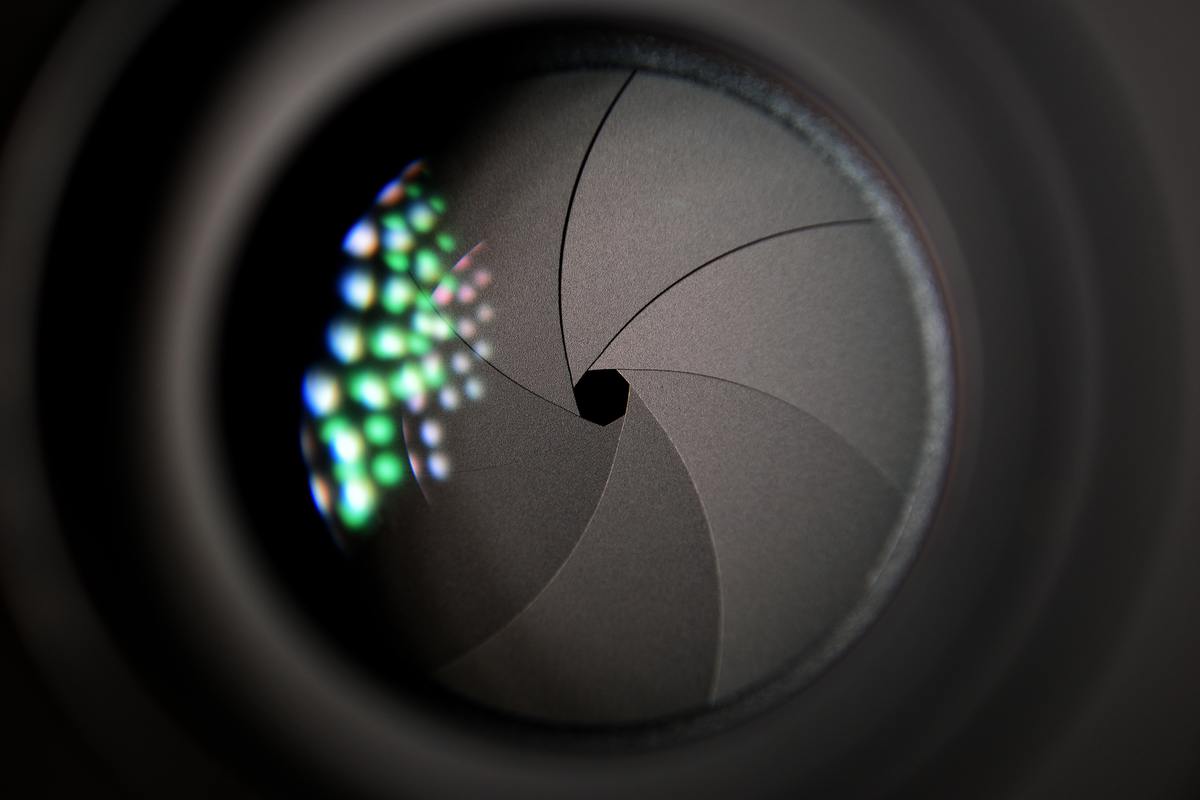
Many of the lenses on the list are F/2.8 and F/4; this is for a reason! Generally speaking, the wider the lens’s aperture, the more adaptable the lens becomes.
This is because the aperture itself significantly impacts how the final image looks and how well the available light is handled. A wide aperture will let in more light and give you a shallow depth of field. On the other hand, a smaller aperture will reduce the amount of light and increase the depth of field. What the preference is, depends on the photographer’s shooting style.
But, the caveat is that an aperture can only widen to its widest construction, but all lenses can narrow their aperture quite a bit. As such, it is best to invest in a lens with a very wide aperture and narrow it if needed, as this gives you the most versatility.
There are two types of apertures in lenses – variable and fixed. Variable aperture lenses are those with apertures that narrow throughout a focal length’s zoom. For instance, the EF-S 10-22mm lens has a variable aperture of f/3.5-4.5, meaning that the maximum aperture at 10mm is f/3.5, and the maximum aperture at 22mm is f/4.5.
On the other hand, fixed aperture lenses maintain the same aperture throughout the entire focal length range. This means that if you have a 16-35mm f/2.8 lens, the aperture will remain the same even if you zoom in or out. This is ideal, as variable apertures will keep changing their exposure as you zoom in and out.
Regarding video, a fixed aperture lens is preferred because it maintains consistent exposure throughout the footage.
When deciding on which lens to purchase, there seems to be a correlation between wider apertures and sharpness. Lenses with both an f/4 and f/2.8 version will most likely have a sharper overall output with the 2.8 version.
Choosing the Best Wide Angle Lens for Canon
Several factors go into choosing the right wide-angle lens to invest in. Price is one of the first things to consider; generally, the more expensive the lens, the higher the quality. However, this is not always the case, so it’s essential to research to find a lens that suits your budget and still delivers excellent image quality.
On the topic of image quality, this is also a crucial factor. You want to look for a lens that delivers sharp, detailed images with minimal distortion. The aperture plays a fundamental role, with wider being more desirable.
As mentioned above, lenses with larger apertures allow more light into the camera, resulting in better low-light performance and more beautiful bokeh effects. However, a larger aperture often comes at a higher price. It’s essential to weigh your options and choose an aperture that suits your needs.
But none of this matters if the lens isn’t compatible with your camera. Check your camera mount and seek lenses that work with your camera body. Otherwise, you’ll be left with an expensive paperweight.
Of the lenses on this list, my favorite for each mount is the following:
- Canon RF 15-35mm f/2.8L IS USM for mirrorless photographers.
- Canon EF 16-35mm f/2.8L III USM for full-frame DSLR users.
- Canon EF 17-40mm f/4L USM for budget-conscious DSLR owners.
- Canon EF-S 10-22mm f/3.5-4.5 USM for an EF-S lens option.
Summarizing The Recommendations:
| Image | Product | Features | Price |
|---|---|---|---|
Best RF Option  |
| Find On Amazon | |
 |
| Find On Amazon | |
Best EF Option  |
| Find On Amazon | |
 |
| Find On Amazon | |
 |
| Find On Amazon | |
 |
| Find On Amazon | |
 |
| Find On Amazon | |
 |
| Find On Amazon | |
Best EF-S Option  |
| Find On Amazon | |
 |
| Find On Amazon |
